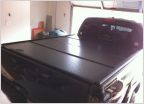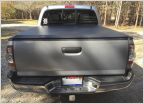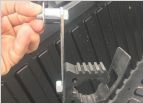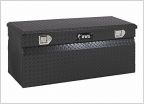-
Welcome to Tacoma World!
You are currently viewing as a guest! To get full-access, you need to register for a FREE account.
As a registered member, you’ll be able to:- Participate in all Tacoma discussion topics
- Communicate privately with other Tacoma owners from around the world
- Post your own photos in our Members Gallery
- Access all special features of the site
How to: DIY Wedge Camper
Discussion in 'Tonneau Covers, Caps and Shells' started by Ripcord, Apr 15, 2019.
Page 1 of 185
Page 1 of 185


 Which Tonneau cover to get??
Which Tonneau cover to get?? Tonneau Cover
Tonneau Cover Shovel Mount for Under Tonneau Cover
Shovel Mount for Under Tonneau Cover Gasket For Sealing Under Tracks?
Gasket For Sealing Under Tracks? Has anyone used a Syneticusa retractable cover?
Has anyone used a Syneticusa retractable cover? UWS Tool Box with a Shell/topper
UWS Tool Box with a Shell/topper





























































